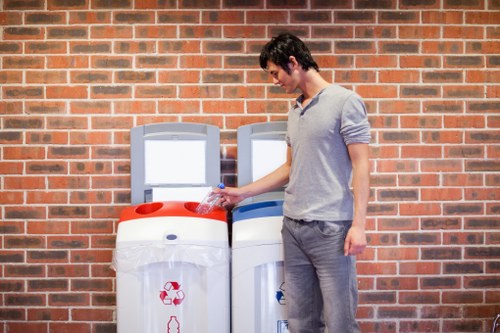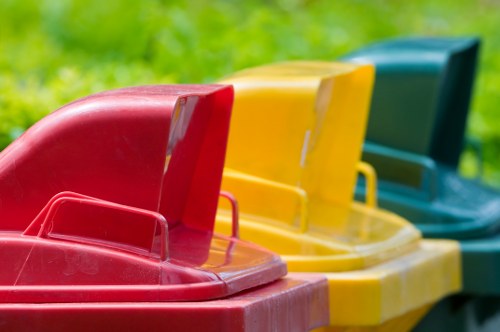Understanding Flat Clearance at Custom House

Moving to a new home or relocating a flat involves various logistical challenges, one of which is navigating through the customs clearance process. Whether you're importing furniture, moving personal belongings, or setting up a new residence, understanding flat clearance at Custom House is crucial for a smooth transition.
Custom House plays a pivotal role in facilitating the movement of goods across borders. It ensures that all items adhere to regulatory standards and that any duties or taxes are appropriately handled. This article delves into the intricacies of flat clearance at Custom House, providing you with the knowledge needed to manage your relocation effectively.
Flat clearance involves the comprehensive inspection and approval of goods entering or leaving a country. At Custom House, this process is managed by expert customs brokers who specialize in handling various types of shipments, including household items, electronics, and even vehicles.

The Importance of Flat Clearance
Flat clearance is not just a bureaucratic step; it’s a critical process that ensures the legality and safety of goods being transported. Without proper clearance, your items could be delayed, fined, or even confiscated. This can lead to significant stress and financial loss, especially when you're already dealing with the pressures of moving.
Ensuring Compliance with Regulations
Each country has its own set of regulations regarding the import and export of goods. Flat clearance at Custom House ensures that your shipment complies with these laws. This includes verifying the documentation, assessing the value of goods, and ensuring that prohibited items are not included in the shipment.
Minimizing Delays and Costs
Efficient flat clearance can significantly reduce delays and associated costs. By working with experienced customs brokers, you can streamline the clearance process, ensuring that your goods move swiftly through customs without unnecessary hold-ups.

The Flat Clearance Process at Custom House
The flat clearance process at Custom House involves several key steps designed to ensure that your goods are processed smoothly and efficiently.
1. Documentation
Proper documentation is the foundation of successful customs clearance. Key documents include the bill of lading, commercial invoice, packing list, and any necessary permits or licenses. Accurate and complete paperwork helps prevent delays and ensures that your shipment complies with all regulatory requirements.
2. Inspection
Customs authorities may inspect your goods to verify their contents and ensure compliance with regulations. This inspection can be physical or through electronic means, depending on the nature of the goods and the specific requirements of the destination country.
Preparing for Inspection
To facilitate a smooth inspection process, ensure that your goods are well-organized and easily accessible. Labeling items clearly and providing detailed descriptions can help expedite the inspection process.

Choosing the Right Customs Broker
Working with an experienced customs broker is essential for successful flat clearance. A knowledgeable broker can guide you through the entire process, ensuring that all requirements are met and that your goods are cleared efficiently.
Qualities of an Effective Customs Broker
- Expertise in local and international regulations
- Strong communication skills
- Proven track record of successful clearances
- Ability to handle complex shipments
Finding a Reliable Broker
Research and recommendations are key when selecting a customs broker. Look for brokers with positive reviews, extensive experience, and a deep understanding of the customs clearance process at Custom House.

Common Challenges in Flat Clearance
Despite thorough preparation, several challenges can arise during the flat clearance process. Being aware of these potential issues can help you mitigate risks and handle problems effectively.
1. Incomplete Documentation
Missing or incorrect documents can lead to significant delays. Ensure that all paperwork is accurate and complete before submitting your shipment for clearance.
2. Unexpected Inspections
Sometimes, shipments are selected for additional inspections. While this can cause delays, being prepared and cooperative can help speed up the process.
3. Regulatory Changes
Customs regulations can change frequently. Staying informed about the latest rules and requirements ensures that your shipment remains compliant.
Adapting to Changes
Regularly consulting with your customs broker and monitoring official channels can help you stay updated on any regulatory changes that may affect your shipment.
Local Relevance: Nearby Areas to Custom House
- Canary Wharf: Known for its financial district, it's close to Custom House and offers excellent transport links for your clearance needs.
- Stratford: A vibrant area with numerous amenities, making it convenient for those managing flat clearance processes.
- Bow: Offers a mix of residential and commercial properties, ideal for businesses requiring regular customs services.
- Barking: A bustling area with easy access to Custom House, perfect for quick clearance operations.
- Forest Gate: Close to transport hubs, facilitating efficient movement of goods during clearance.
- East Ham: Offers a strategic location for businesses handling imports and exports.
- Ilford: A diverse area with numerous logistics companies supporting flat clearance services.
- Plaistow: Proximity to Custom House makes it a preferred area for residents needing clearance services.
- Basildon: Nearby area providing additional support and services for flat clearance processes.
- Wapping: Historic area with modern facilities, enhancing the flat clearance experience.
Tips for a Smooth Flat Clearance Experience
To ensure a hassle-free flat clearance at Custom House, consider the following tips:
- Start Early: Begin the clearance process well in advance to account for any unexpected delays.
- Organize Documentation: Keep all necessary documents handy and double-check for accuracy.
- Communicate Effectively: Maintain clear and consistent communication with your customs broker.
- Stay Informed: Keep up-to-date with the latest customs regulations and requirements.
- Pack Wisely: Ensure that your goods are packed securely and labeled correctly to facilitate inspections.
Utilizing Technology
Leverage technology to track your shipment and manage documentation. Many customs brokers offer online platforms that provide real-time updates and streamlined processes.
Maintaining Flexibility
Be prepared to adapt to changes or unexpected challenges that may arise during the clearance process. Flexibility can help you navigate obstacles more effectively.
Conclusion
Flat clearance at Custom House is a critical step in the relocation process, ensuring that your goods are transported legally and efficiently. By understanding the process, preparing adequately, and working with experienced professionals, you can navigate the complexities of customs clearance with ease.
Whether you're moving locally or internationally, investing time and resources into managing your flat clearance can save you from potential headaches and ensure a smooth transition to your new home or business location.
Frequently Asked Questions
1. What is flat clearance at Custom House?
Flat clearance at Custom House refers to the process of inspecting and approving non-commercial goods, such as household items, during import or export through the Custom House facility.
2. How long does the flat clearance process take?
The duration of flat clearance can vary depending on the complexity of the shipment and compliance with regulations. Typically, it can take anywhere from a few days to a couple of weeks.
3. What documents are required for flat clearance?
Essential documents include the bill of lading, commercial invoice, packing list, and any necessary permits or licenses. Accurate and complete documentation is crucial for a smooth clearance process.
4. Do I need a customs broker for flat clearance?
While not mandatory, hiring a customs broker is highly recommended. They have the expertise to navigate the complexities of customs regulations and can significantly streamline the clearance process.
5. What fees are associated with flat clearance?
Fees can include customs duties, taxes, brokerage fees, and any additional charges for inspections or expedited services. The exact costs depend on the nature and value of the goods being cleared.
